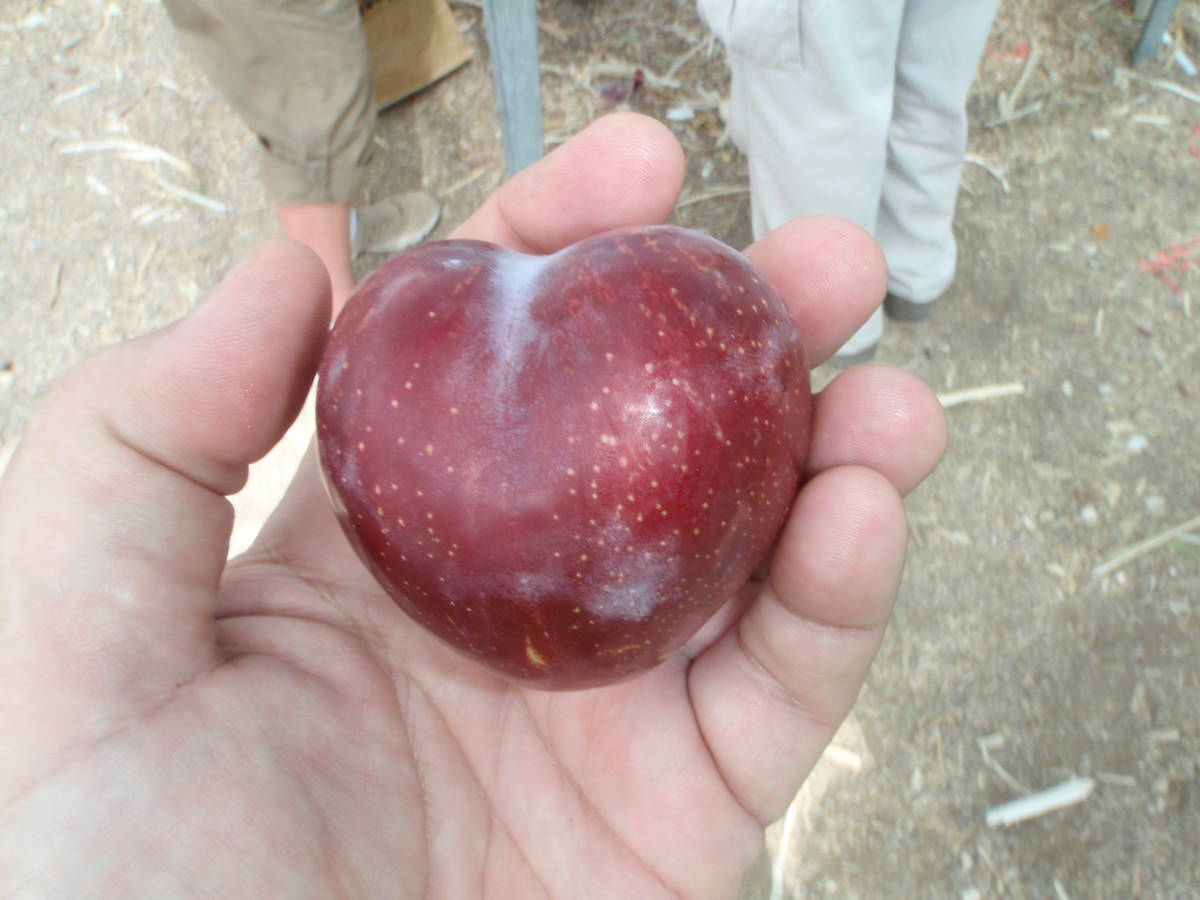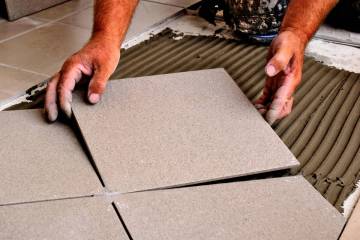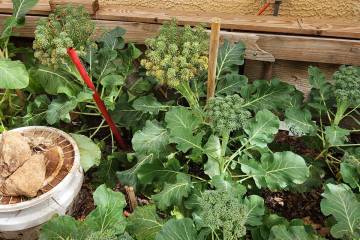Bird pecking can indicate fruit is ready to harvest
Q: We have a Flavor King pluot that produced very well in the past. This year it is loaded with pluots, but the flavor is very bland. They were great last year. This year we covered the tree to keep the birds from eating the fruit and trimmed some of the branches so we could cover it with a net. Could this be the reason the flavor is so poor?
A: This question arrived in mid-July, which is a bit early for harvesting this fruit. By mid-July, this fruit was still half green in my past experiences. This fruit is normally harvested from the end of July to the first or second week of August in our climate.
If the fruit has already turned from green to red, it will ripen off the tree and become more flavorful in a few days. Unlike apricots, which can be harvested early and change little in flavor, this fruit is not as lucky. Plums and pluots improve in flavor when they are kept on the tree longer and harvested closer to their mature date.
I understand netting the tree to prevent birds from getting the fruit, but they usually don’t start pecking the fruit severely until about two weeks before harvest. When birds are hungry, they will peck unripened fruit. Also, if there is no other fruit around, the birds might go after unripened fruit.
Heavy bird pecking can be used as an indicator that it’s ready to start harvesting. Firm fruit that is climacteric — like peaches, apricots and plums — continue to ripen after harvest when kept at room temperature.
Fruit that does not ripen off the tree — like figs, pomegranates and apples — has to be picked when ripe and might require netting or careful observation when bird damage is a potential problem.
Q: What is the best fertilizer for chaste trees?
A: Theoretically, a slightly higher amount of phosphorus is needed for the flowers, such as a fruit tree fertilizer. Just like any tree, use a high-nitrogen fertilizer when it’s young to push growth and a moderate nitrogen fertilizer as it gets older. Trees that flower like the chaste tree benefit from a higher phosphorus fertilizer, such as a tomato or rose fertilizer, as they get older.
If you prefer to use organic fertilizers, compare what you might use when fertilizing a lawn versus a fertilizer used on fruit trees, roses or tomatoes. Besides shifting to a different kind of fertilizer, note that organic fertilizers are applied in greater amounts, and one application lasts a long time.
In conventional lingo, a good lawn grass fertilizer, such as 21-7-14, is also a good fertilizer for young tree growth because of its high nitrogen content. High-nitrogen organic fertilizers oftentimes contain blood meal or “feather meal.” Compost made from animal excrement contains a lot of phosphorus with nitrogen, so it is better for flowering plants in the long run.
What is missing from most fertilizers, whether organic or conventional, is potassium, (the third number on the bag. It’s not thought about much because a plant shortage is not easily detected.
When you can find potassium in a fertilizer, get it. Potassium is important. Apply tree fertilizers once a year and apply them at least 2 feet from the trunk.
Q: You mentioned on your blog about growing tea in the Mojave Desert. Does it matter what type of tea one tries to grow in Nevada?
A: To my knowledge, no one has published any solid information on growing tea under our desert conditions: cold winters, hot and dry summers. But, usually, tea is grown in climates that never or seldom freeze.
The differences in types of tea come from where it is grown, how it was harvested and what was done with it after harvest. All tea comes from one type of plant: Camellia sinensis.
In my opinion, tea appreciation is much like wine appreciation; its flavor takes on the attributes of the soil and climate where it is grown. Tea can handle the heat of the desert if protected from late afternoon sun.
Like any camellia, it can grow from buds located the base of its stem, called the crown, if the top dies. The shrub’s crown is important to protect during the winter, just like bougainvillea, if you want it to grow back when freezing temperatures are over.
Camellia benefits from a higher humidity than found in most deserts, so a pool, fountain or lawn close by improves overall leaf quality. But it’s the cold that kills the plant outright.
Try growing tea in containers in cold climates and move them into a warmer location when the temperature gets to about 40 degrees, or protect its crown during cold temperatures and grow it in the ground like iris.
Wind is another problem that affects Camellia growth and leaf quality. Keep strong winds from damaging new growth. Slowing the wind in the growing area helps any plant, so a chain-link fence with PVC slats or erecting a reed screen upwind of the plant helps decrease wind damage. Who said growing tea would be easy?
Q: If I were to take cuttings from my peach tree for propagation, what is the process for that?
A: Cuttings are either taken in the early summer as softwood cuttings or during the winter as hardwood cuttings. Peaches and nectarines root best as hardwood cuttings from pencil-sized diameter stems cut before new growth starts in the spring.
These cuttings are then pushed about one-third of their length into a rooting medium. I fill a clean nursery container with potting soil about three-quarters full and use this as a medium to “root” my cuttings.
Fresh cuttings are 6 to 8 inches long with the bottom cut just below the node or “knuckle” as some people call it. This bottom node is rolled into a rooting powder such as the Hormex brand, covering it like powdered sugar.
To prevent the rooting powder from being rubbed off when inserting it in the rooting medium, a pencil creates a half-inch diameter hole vertically for inserting the cutting. A cutting is inserted carefully into the hole and the soil pinched shut around the cutting. Cuttings fill the nursery container, spaced about 2 inches apart and then watered with tepid water enough to moisten the medium.
The nursery container is kept inside until leaf growth is seen and then placed outside in the warm sun until it finishes rooting. Cuttings root faster if the container is brought inside each night until the air temperatures are warm, but it is not necessary.
The cuttings are not moved until roots form in about six to eight weeks. Then the cuttings can be planted into individual containers for further rooting and growth and acclimated to their new environment.
Q: When the bottle tree develops pods, I want to cut them off because they are weighing down the branches. Or will this affect new growth on the tree? Also is there a difference between female and male trees?
A: Bottle tree seed pods can be a litter problem. Remove them at any time, but if you cut off the spent flowers when the tree finishes blooming, it actually saves the plant some energy and doesn’t hurt anything.
The tree is what we call “monoecious,” so you may not know which are “boy” flowers and which are “girl” flowers. Cutting off the girl flowers eliminates the seed pods. Cutting off the “boy” flowers is just a waste of time.
The sexes don’t work straight forward in this tree. It isn’t like ash and mulberry where male trees — seedless but not pollenless — and female trees — seed or fruit — are on separate trees.
Here they have either male flowers or female flowers but produced on the same tree. So not all the flowers growing on the tree produce these hard, wooden pods.
If you are going to cut them off before they fall on the ground and become a sight nuisance, wait until you see the pod forming. Then you know you followed up on a girl flower.
Bob Morris is a horticulture expert and professor emeritus of the University of Nevada, Las Vegas. Visit his blog at xtremehorticulture.blogspot.com. Send questions to Extremehort@aol.com.























